Atsuta Shrine 熱田神宮 was first established in 113 to house the sacred sword called Kusanagi-no-tsurugi, one of the three symbols of the imperial regalia. In its 1900 year history, it has had many important patrons such as Oda Nobunaga and the Tokugawa shoguns. The main deity is Atsuta-no-ookami, but there are five lesser gods also enshrined there. It is considered the second most important shrine in Japan after Ise.
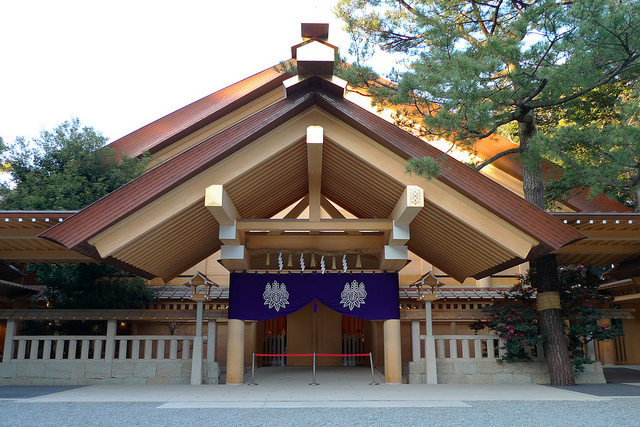
Atsuta Shrine modern building (photo: yvon.liu/flickr)
Virtually all of the buildings were destroyed in World War II, but rebuilding began in 1955 and ended in 2009. There is now a beautiful forested area with the main shrine and many smaller structures, including tea houses and training halls. It is a major cultural center in Nagoya, with over 9 million visitors annually.
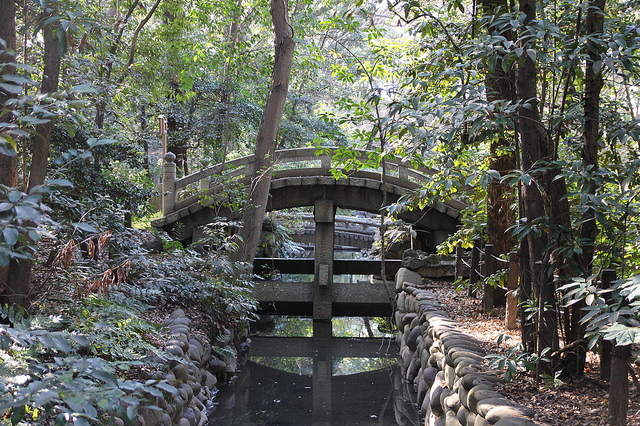
Atsuta Shrine Bridge (photo: Christian Kaden/flickr)
The Atsuta Jingu Museum houses about 4,000 items donated by people ranging in class from the Imperial Family, shoguns and feudal lords to common persons. Among these materials, especially important are the koshinpoh (sacred garments, furniture and utensils for use of the enshrined deities), the swords, the hang mirrors, the Bugaku (ancient court dance) masks, the ancient documents and the household articles, 174 items of which have been designated or Aichi Prefecture important cultural assets.
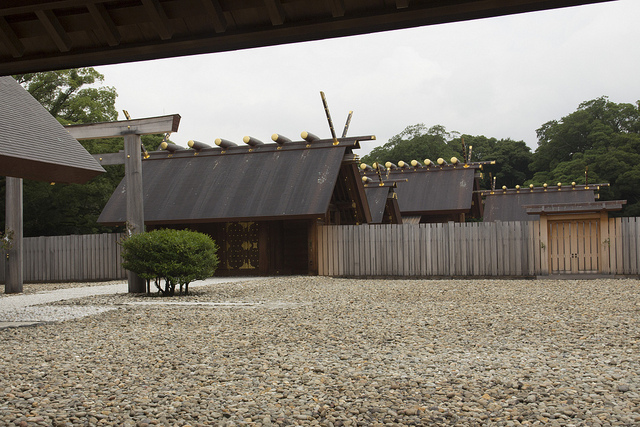
Kusanagi Vault, Atsuta Shrine, Nagoya (photo: JeffRz/flickr)
The collection of swords is particularly notable because talented craftsmen from all over Japan have given their work as offerings over the centuries in tribute to Kusanagi-no-tsurugi.
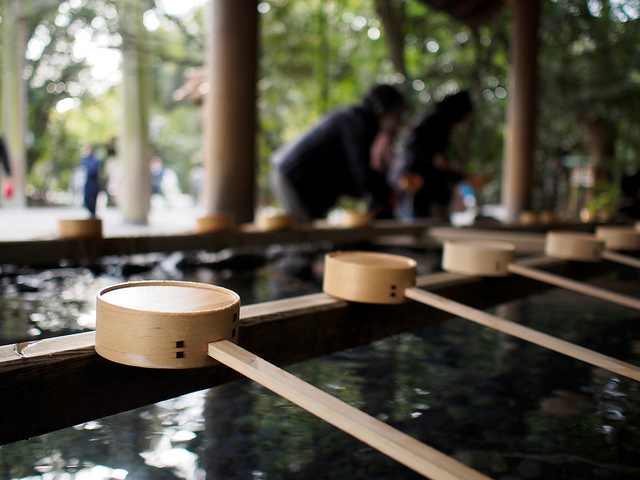
Atsuta Shrine Cleansing Water (photo: “KIUKO”/flickr)
There are many festivals and activities held on the Atsuta Shrine grounds, which are free to enter:
The closest publice transportation is the Jingumae Station on the Meitetsu Railway, which is about a 3-minute walk from the main entrance.
For more information: http://www.atsutajingu.or.jp/en/intro/
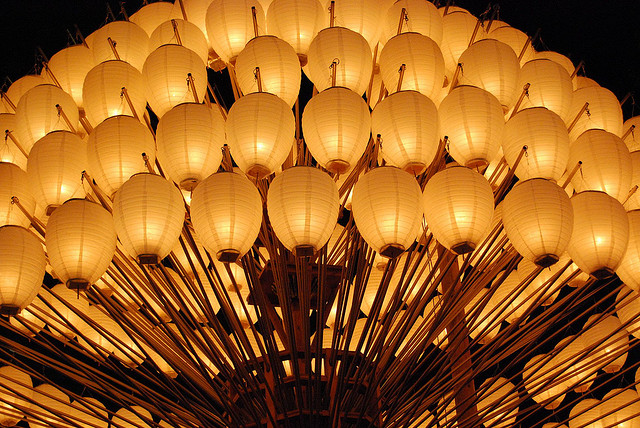
Atsuta Jingu Matsuri (photo: Duncan WJ Palmer/flickr)
